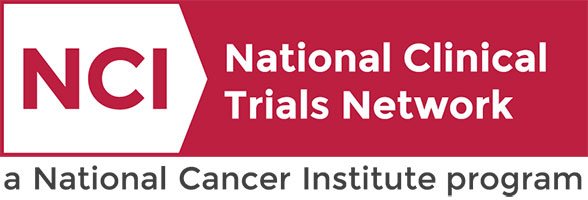Hypofractionated Radiotherapy Followed by Surgical Resection in the Treatment of Soft Tissue Sarcomas
Sarcoma
Sarcoma
The trial will use neoadjuvant hypofractionated radiotherapy followed by surgical resection in the treatment for soft tissue sarcoma. It will allow patients to be treated over a shorter course (5 or 15 days of radiation) compared to the traditional 5 week regimen. It is proposed that this will be possible without increasing the risk of wound complication or local recurrence compared with a traditional 5 week course of pre-operative radiation.
Sarcoma
II
Shinohara, Eric
NCT04506008
VICCSAR2062
A Phase 1/1b Study of IAM1363 in HER2 Cancers
Miscellaneous
Miscellaneous
This is a Phase 1/1b open-label, multi-center dose escalation and dose optimization study designed to evaluate the safety and preliminary efficacy of IAM1363 in participants with advanced cancers that harbor HER2 alterations.
Miscellaneous
I
Kennedy, Laura
NCT06253871
VICCPHI24527
A Master Protocol to Evaluate DCC-3009 in Gastrointestinal Stromal Tumor (GIST)
Multiple Cancer Types
The purpose of this Phase 1/2 master protocol study is to evaluate if DCC-3009 is safe, tolerable and works effectively in the treatment of GIST. The study will use a modular approach with each module being defined according to therapy: DCC-3009 alone or DCC-3009 in combination with other anticancer therapies. Each module will be conducted in 2 parts: Part 1 (Dose Escalation) and Part 2 (Dose Expansion). Participants will be treated in 28-day treatment cycles with an estimated duration of up to 2 years.
Colon,
Esophageal,
GIST,
Gastric/Gastroesophageal,
Gastrointestinal,
Liver,
Pancreatic,
Rectal
I/II
Keedy, Vicki
NCT06630234
VICC-DTSAR24137P
Targeted Alpha-Particle Therapy for Advanced Somatostatin Receptor Type 2 (SSTR2) Positive Neuroendocrine Tumors
Multiple Cancer Types
This study is Phase I/IIa First-in-Human Study of \[212Pb\]VMT--NET Targeted Alpha-Particle Therapy for Advanced SSTR2 Positive Neuroendocrine Tumors
Neuroendocrine,
Phase I
I/II
Ramirez, Robert
NCT05636618
VICC-DTPHI23045
Sequential Therapy in Multiple Myeloma Guided by MRD Assessments
Multiple Myeloma
Multiple Myeloma
This research study will determine the proportion of patients with lowest minimal residual disease (MRD) response obtainable after receiving 6 cycles of study treatment. Minimal residual disease is multiple myeloma cells below the level of 1 cancer cell out of 100,000 in the bone marrow.
For patients who become MRD "negative" (i.e. less than 1 cancer cell out of 100,000) at the end of 6 cycles of therapy, this study will study if that good response can be maintained with 3 additional cycles of treatment instead of use of autologous hematopoietic cell transplantation (AHCT).
For patients who are MRD "positive" at the end of 6 cycles of therapy, this study will answer whether more patients can become and remain MRD "negative" with AHCT plus teclistamab in combination with daratumumab when compared with patients who undergo AHCT followed by lenalidomide (an established anti-myeloma drug) plus daratumumab.
For patients who become MRD "negative" (i.e. less than 1 cancer cell out of 100,000) at the end of 6 cycles of therapy, this study will study if that good response can be maintained with 3 additional cycles of treatment instead of use of autologous hematopoietic cell transplantation (AHCT).
For patients who are MRD "positive" at the end of 6 cycles of therapy, this study will answer whether more patients can become and remain MRD "negative" with AHCT plus teclistamab in combination with daratumumab when compared with patients who undergo AHCT followed by lenalidomide (an established anti-myeloma drug) plus daratumumab.
Multiple Myeloma
II
Baljevic, Muhamed
NCT05231629
VICC-ITPCL23014
Nilotinib Plus Dabrafenib/Trametinib or Encorafenib/Binimetinib in Metastatic Melanoma
Multiple Cancer Types
This is a phase 1 dose-escalation study of nilotinib in combination with fixed-dose dabrafenib and trametinib regimen for patients with metastatic or unresectable melanoma carrying a BRAF V600 mutation and have relapsed on a BRAF/MEK inhibitor therapy. The goal is to assess the toxicity and tolerability and determine the maximum tolerated dose (MTD)/recommended phase 2 dose (RP2D) of the combination of nilotinib with dabrafenib and trametinib or with encorafenib and binimetinib. Additionally, this study will assess pharmacokinetic parameters of dabrafenib and nilotinib when used in combination.
Melanoma,
Phase I
I
Johnson, Douglas
NCT04903119
VICCMELP2274
Colon Adjuvant Chemotherapy Based on Evaluation of Residual Disease
Multiple Cancer Types
This Phase II/III trial will evaluate the what kind of chemotherapy to recommend to patients based on the presence or absences of circulating tumor DNA (ctDNA) after surgery for colon cancer.
Colon,
Rectal
II/III
Ciombor, Kristen
NCT05174169
SWOGGI008
A Study Using Risk Factors to Determine Treatment for Children With Favorable Histology Wilms Tumors (FHWT)
This phase III trial studies using risk factors in determining treatment for children with favorable tissue (histology) Wilms tumors (FHWT). Wilms Tumor is the most common type of kidney cancer in children, and FHWT is the most common subtype. Previous large clinical trials have established treatment plans that are likely to cure most children with FHWT, however some children still have their cancer come back (called relapse) and not all survive. Previous research has identified features of FHWT that are associated with higher or lower risks of relapse. The term "risk" refers to the chance of the cancer coming back after treatment. Using results of tumor histology tests, biology tests, and response to therapy may be able to improve treatment for children with FHWT.
Not Available
III
Not Available
NCT06401330
COGAREN2231
Testing the Addition of a New Anti-cancer Drug, M3814 (Peposertib), to the Usual Radiotherapy in Patients With Locally Advanced Pancreatic Cancer
Pancreatic
Pancreatic
This phase I/II trial studies the safety, side effects and best dose of M3814 and to see how well it works when given together with radiation therapy in treating patients with pancreatic cancer that has spread to nearby tissue or lymph nodes (locally advanced). M3814 may stop the growth of tumor cells by blocking some of the enzymes needed for cell growth. Hypofractionated radiation therapy delivers higher doses of radiation therapy over a shorter period of time and may kill more tumor cells and have fewer side effects. Giving M3814 and hypofractionated radiation therapy together may be safe, tolerable and/or more effective than radiation therapy alone in treating patients with locally advanced pancreatic cancer.
Pancreatic
I/II
Cardin, Dana
NCT04172532
NCIGIP10366
Testing the Role of DNA Released From Tumor Cells Into the Blood in Guiding the Use of Immunotherapy After Surgical Removal of the Bladder, Kidney, Ureter, and Urethra for Urothelial Cancer Treatment, MODERN Study
This phase II/III trial examines whether patients who have undergone surgical removal of bladder, kidney, ureter or urethra, but require an additional treatment called immunotherapy to help prevent their urinary tract (urothelial) cancer from coming back, can be identified by a blood test. Many types of tumors tend to lose cells or release different types of cellular products including their DNA which is referred to as circulating tumor DNA (ctDNA) into the bloodstream before changes can be seen on scans. Health care providers can measure the level of ctDNA in blood or other bodily fluids to determine which patients are at higher risk for disease progression or relapse. In this study, a blood test is used to measure ctDNA and see if there is still cancer somewhere in the body after surgery and if giving a treatment will help eliminate the cancer. Immunotherapy with monoclonal antibodies, such as nivolumab and relatlimab, can help the body's immune system to attack the cancer, and can interfere with the ability of tumor cells to grow and spread. This trial may help doctors determine if ctDNA measurement in blood can better identify patients that need additional treatment, if treatment with nivolumab prolongs patients' life and whether the additional immunotherapy treatment with relatlimab extends time without disease progression or prolongs life of urothelial cancer patients who have undergone surgical removal of their bladder, kidney, ureter or urethra.
Not Available
II/III
Tan, Alan
NCT05987241
ALLUROA032103


